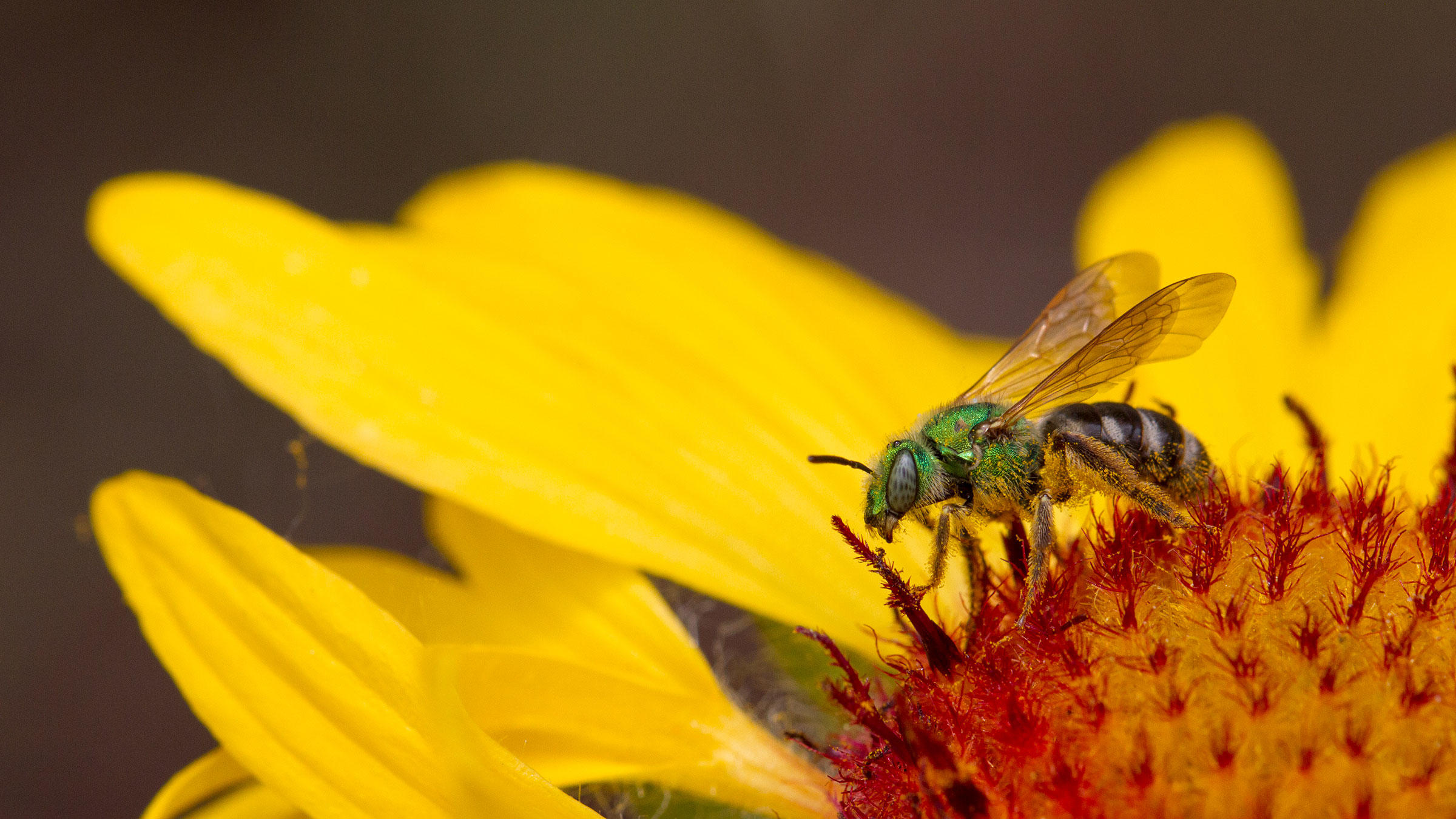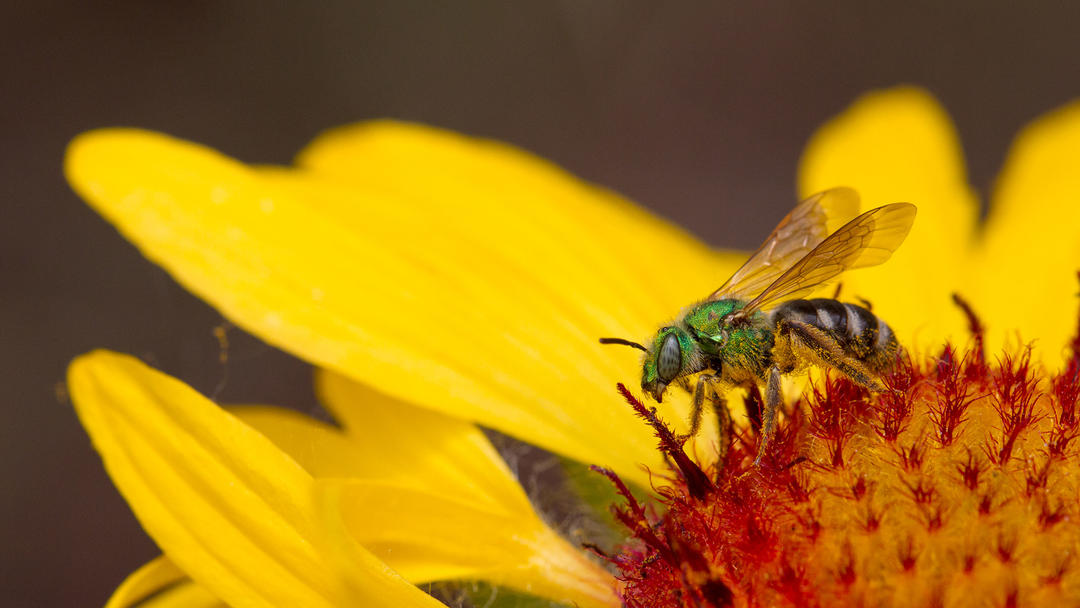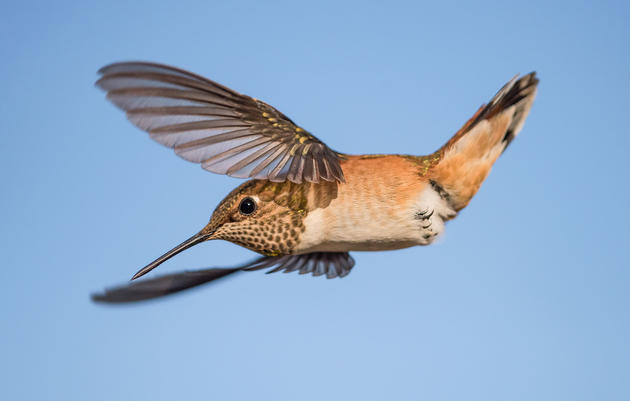When people think of bees, the first bee that comes to mind for many is the honey bee (Apis mellifera). When prodded, many will next mention bumblebees (Bombus spp.). But, did you know that there are approximately 950 different species of bees here in Colorado? 950 species of bees—that’s a lot! Bees come in all shapes, sizes and colors. Let’s take a closer look at some of my favorite Colorado bees.
Bumblebees
Bumblebees are large, fuzzy, docile bees. Here in Colorado, we count more than two dozen species as regular residents. They are super cool for two reasons. First, they can thermoregulate. Have you ever seen a bumblebee shivering? This is a bumblebee that is warming its flight muscles. This ability means that bumblebees can fly earlier and later in both the day and the season. Second, they pollinate using a special technique called buzz pollination or sonication. The flower is violently vibrated by the insect, resulting in superior pollination. Some plants require this type of pollination—tomatoes and blueberries, for example. In Colorado, bumblebees provide pollination for many of our high altitude plants.
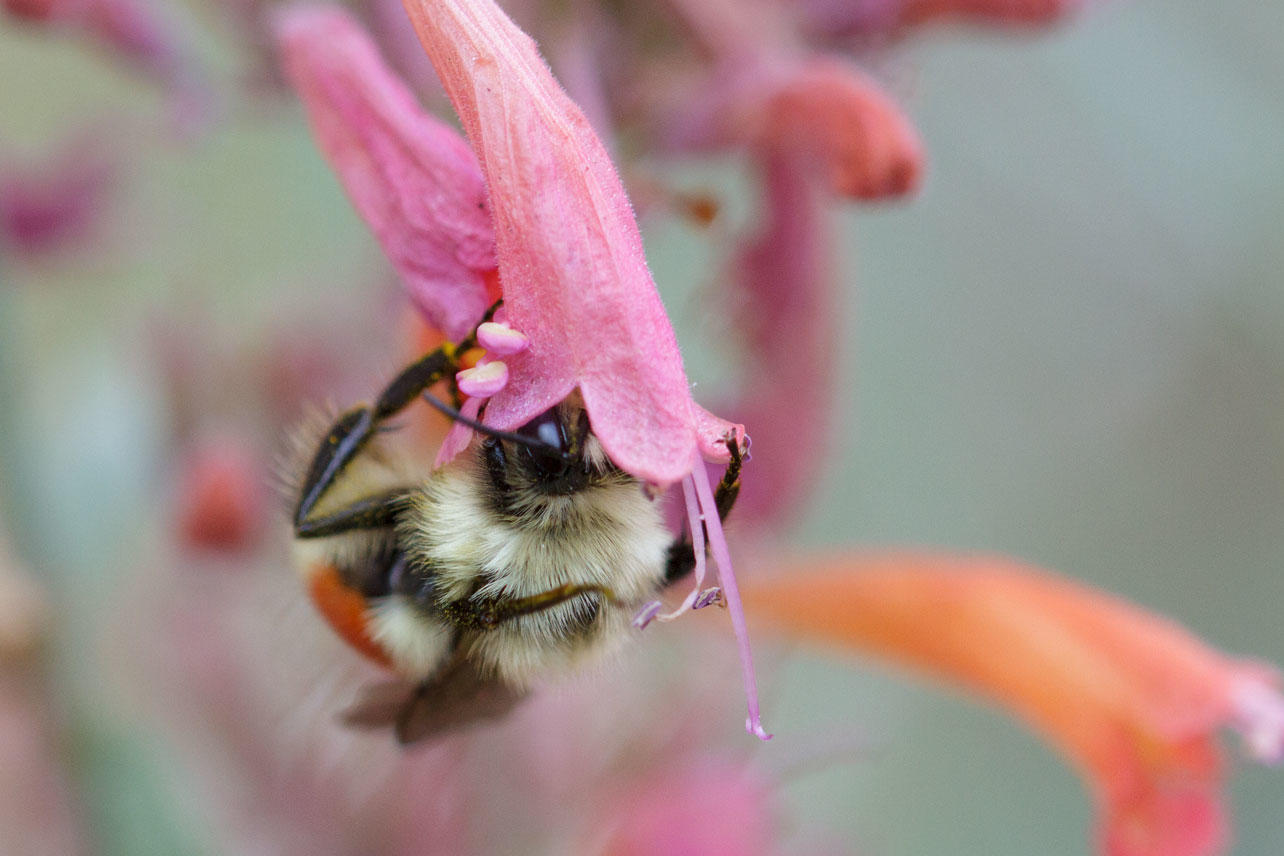
There is a comprehensive publication entitled “Bumblebees of the Western United States” that you should read if you are interested in bumblebees. Here is a pocket identification guide from Utah that I find useful for visually identifying bees by their coloration.
Bumblebees live in the ground, typically in abandoned rodent burrows. Bumblebees are eusocial, meaning that they live in a social environment of several dozen bees.
If you'd like to help monitor and conserve these amazing insects, consider participating in Bumblebee Watch, a community science program on bumblebees.
The rest of these Colorado bee species are solitary bees. Solitary bees nest by themselves in little holes in the ground or in the hollow stems of plants or holes in wood. Solitary bees are generally single-generational, meaning they raise only one generation of offspring per year.
Leafcutter Bees
Leafcutter bees are named for their behavior of cutting leaves to make their nests. Have you ever noticed perfectly round dime-sized holes in the leaves of your roses or Virginia creeper? Then a leafcutter bee has visited you! Leafcutters cut the leaf with their mandibles and carry the leaf piece back to their nest. It takes several leaves to make a nest. The females provision the nest with both pollen and nectar, onto which she lays an egg. The larva hatch, feed on the nectar and the pollen and metamorphose into an adult—all inside the leaf nest! The following year, the adults hatch and the process repeats itself. Make time to watch a female make her nest. It will be time well spent.
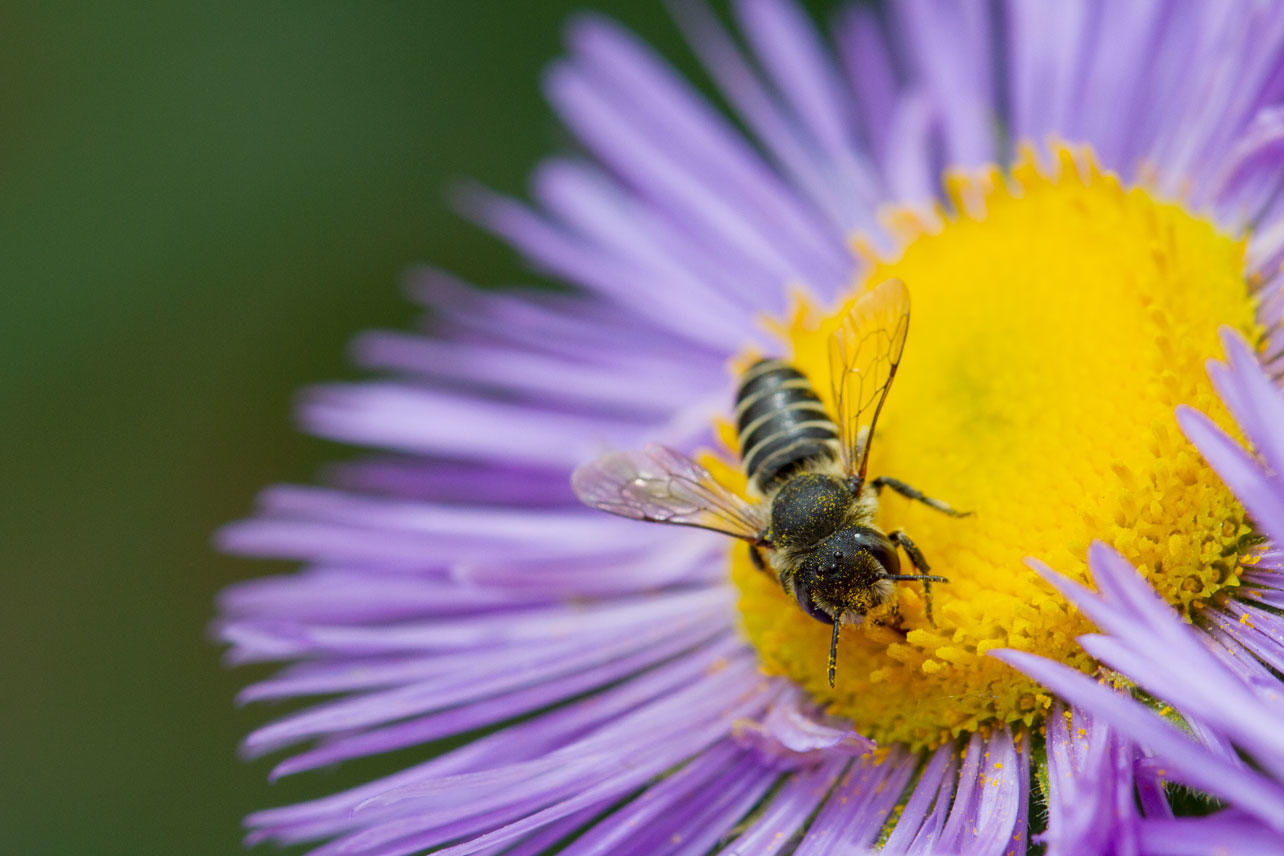
Mason Bees
Mason bees are appropriately named too. They are tube nesters but construct and seal their nests with “mud” instead of leaf pieces. Mason bees belong to the genus Osmia. The most common is the orchard mason bee, which is a terrific pollinator of spring fruit trees. It is short-lived and spends its adult life within 100 yards of its home and food source.

Bees are important pollinators. Some are quite specialized and only pollinate specific crops. For example, squash bees only pollinate plants in the squash family. In contrast, honey bees are generalists and pollinate most plants.
Data are lacking on most bee species, but they are generally thought to be in decline for a variety of reasons—overuse of pesticides, lack of food, and decreasing spaces to live and breed. Many of these are within your control. Reduce or eliminate your pesticide use and plant more native flowers!
These bees also benefit from housing opportunities and are exceptionally gratifying. Build it and they will come! To learn how to create housing for these bees, click here.
There are so many bees in Colorado that I have not even mentioned! There are sweat bees (the peacocks of the bee world), digger bees, mining bees, carpenter bees, and wool carder bees—to name just a few! Make time in your busy world to observe the bees in their busy world. You will bee amazed!

